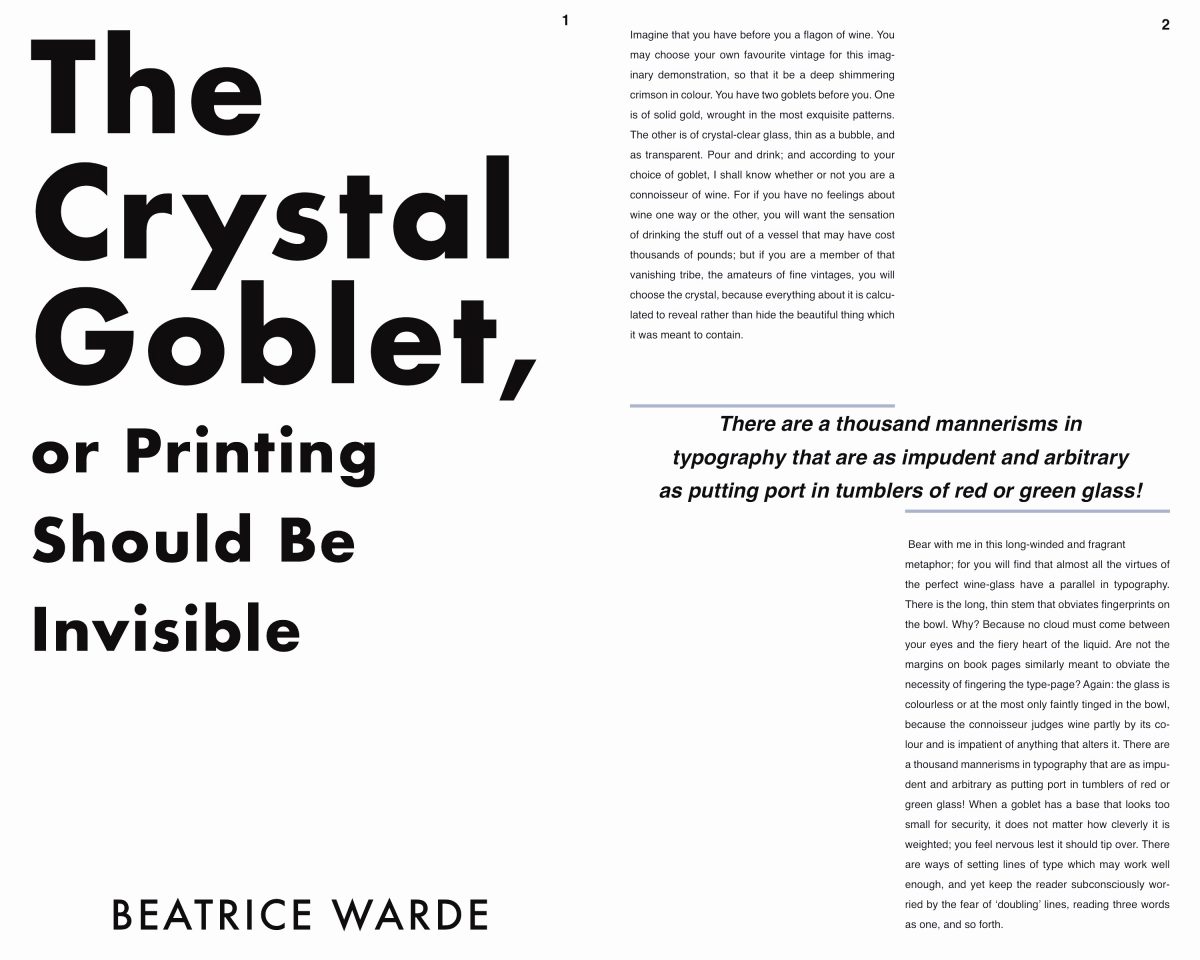“Artists feel and Typographers thinks.”
– The Crystal Goblet, Beatrice Warde
In the reading, The Crystal Goblet, Beatrice Warde aims to convey the message that typography is more technical than you think, and not just a casual type on a document. She uses a metaphor of a solid gold versus a crystal goblet, paralleling it with typographic skills to infer the purpose of type and the effects on communication between humans. She claims that type or printing is meant to “convey thoughts, ideas, and images from one mind to other minds.” Typography corresponds to the spoken language that humans use everyday – to highlight thoughts and ideas contained in the written word.
Moreover, Warde commends that typography is not considered a work of art by stating the fact that printing is still an active form of communication and language proves typography cannot be an art. A fine art artist reflects feelings and emotions, whereas a typographer and designer tend to think more than they feel. Warde also compares the topics on the readability and legibility of type in order to support her purpose. Like typography it takes into account the necessity of a clean page that is able to convey the message it is intending to, together with the page layout. This enables the readers to read through the author’s idea without the intervening by the book typographer’s propagandistic ‘art’.
Typography is a design process of calculative thinking base on measurements and experimentations. It is rather subjective than an expression. Thus, a responsible typographer is like a crystal goblet that is transparent enough to hold the wine (the author’s mind) allowing the connoisseur (the reader) to see directly and clearly on the wine. This reading brings out a contemporary perspective on typography and how modernism is still influencing the way society thinks. We, as designers need to understand to use typography responsibly in the design industry – to take full control of words we create and see, to be able to understand the word before we absorb and appreciate the aesthetics.
